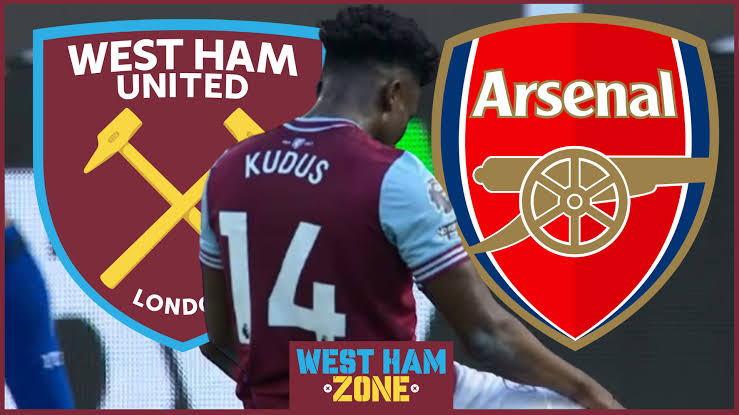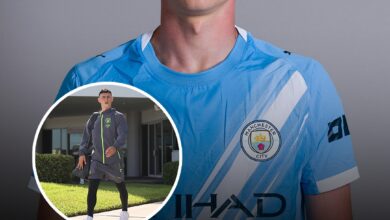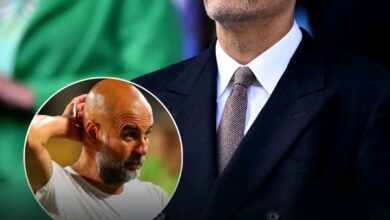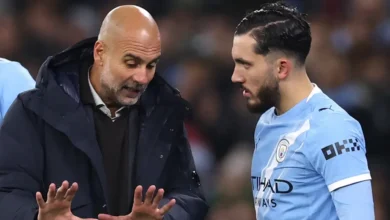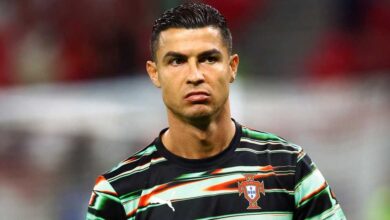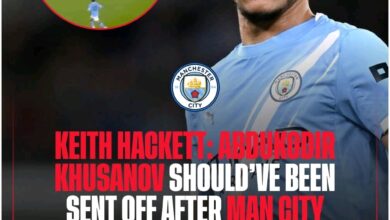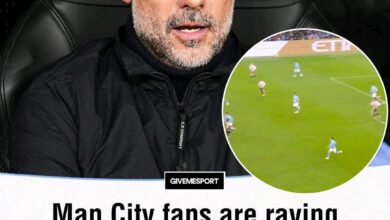Arsenal’s Pursuit of Mohammed Kudus: A Strategic Transfer Analysis
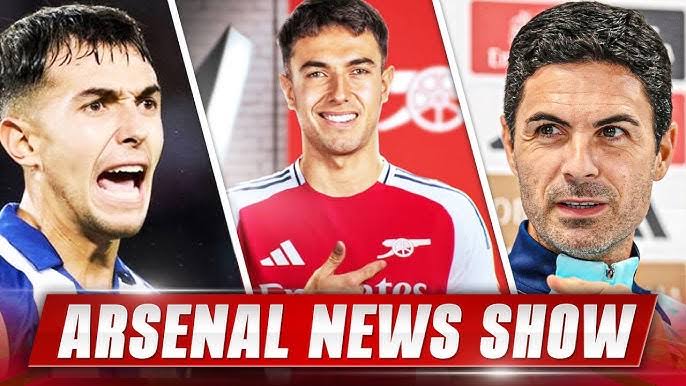
Arsenal Football Club’s transfer strategy continues to evolve under Mikel Arteta’s leadership, with the North London giants reportedly setting their sights on West Ham United’s versatile Ghanaian forward Mohammed Kudus. This potential acquisition represents more than just another transfer rumor—it signals Arsenal’s commitment to building a squad capable of competing at the highest level across multiple competitions while addressing the tactical flexibility that has become increasingly crucial in modern football.
The 24-year-old winger has emerged as one of the most intriguing talents in the Premier League since his arrival from Ajax in 2023, and his potential move to the Emirates Stadium could reshape Arsenal’s attacking dynamics for years to come. This comprehensive analysis examines the multifaceted aspects of this potential transfer, from financial implications to tactical considerations, while exploring what Kudus could bring to Arsenal’s already formidable squad.
Mohammed Kudus represents the archetypal modern forward—versatile, technically gifted, and capable of operating across multiple positions in the final third. Standing at 1.77 meters, the Ghanaian international possesses the ideal blend of pace, skill, and football intelligence that has made him one of West Ham’s most valuable assets since his arrival in East London.
His journey to prominence began at Right to Dream Academy in Ghana before making his mark in European football with FC Nordsjaelland in Denmark. It was at Ajax where Kudus truly flourished, developing into one of Europe’s most promising young talents under the guidance of coaches who understood how to maximize his unique skill set. His performances in the Eredivisie and Champions League caught the attention of numerous top clubs, with West Ham ultimately securing his signature for £38 million in the summer of 2023.
What sets Kudus apart from many of his contemporaries is his exceptional versatility. He can operate effectively as a traditional winger on either flank, drop into central attacking midfield positions, or even function as a false nine when tactical situations demand it. This adaptability has made him invaluable to West Ham, but it also explains why Arsenal view him as such an attractive proposition for their own tactical system.
The Ghanaian’s technical ability is perhaps his most striking attribute. His close control in tight spaces, combined with an impressive success rate in one-on-one situations, makes him a constant threat to opposition defenses. His 48% success rate in dribbles during the 2024-25 Premier League season demonstrates his ability to beat defenders consistently, while his 2.9 successful dribbles per game showcase his willingness to take on opponents and create opportunities for his team.
Arsenal’s interest in Kudus aligns perfectly with their broader transfer philosophy under Arteta and sporting director Edu Gaspar. The club has consistently targeted players who can provide tactical flexibility while maintaining the technical standards required to implement their possession-based style of play. Kudus fits this profile perfectly, offering the kind of versatility that has become increasingly valuable in an era where squad rotation and tactical adaptation are essential for success across multiple competitions.
The timing of Arsenal’s interest is particularly significant given the challenges they faced during the 2024-25 season with injuries to key attacking players. Bukayo Saka’s extended absence of more than two months highlighted the team’s vulnerability to losing key personnel, while injuries to Gabriel Martinelli and Leandro Trossard further exposed the need for greater depth and quality in wide positions.
Kudus would address these concerns while providing Arteta with additional tactical options. His ability to play across the front line means he could seamlessly integrate into Arsenal’s system without requiring significant tactical adjustments. Whether deployed as a traditional winger to provide width and pace, or utilized in more central positions to exploit space between the lines, Kudus possesses the technical attributes and football intelligence to excel in Arsenal’s demanding tactical framework.
The financial aspect of the potential deal also aligns with Arsenal’s current transfer strategy. While the reported £80 million release clause would represent a significant investment, the suggestion that West Ham might accept a lower fee—potentially in the £46-51 million range—makes the deal more financially viable for Arsenal. This would represent excellent value for a player of Kudus’s age, ability, and potential for further development.
Mikel Arteta’s tactical system has evolved significantly since his appointment as Arsenal manager, with the team now employing a sophisticated approach that requires players capable of fulfilling multiple roles within the same match. Kudus’s versatility would be particularly valuable in this context, offering Arteta the flexibility to adjust his tactical approach based on opposition strengths and weaknesses.
In Arsenal’s traditional 4-3-3 formation, Kudus could operate on either wing, providing the pace and direct running that has become such a crucial component of their attacking play. His ability to drift infield and create overloads in central areas would complement the movement of Arsenal’s other attacking players, while his willingness to track back and contribute defensively aligns with the high work rate that Arteta demands from his forwards.
The Ghanaian’s technical ability would also be valuable in Arsenal’s build-up play. His comfort in receiving the ball in tight spaces and his ability to retain possession under pressure would help the team maintain their possession-based approach while providing the directness needed to break down stubborn defenses. His 4.3 balls recovered per game during the 2024-25 season demonstrates his commitment to the defensive aspects of the game, which would be essential in Arteta’s high-pressing system.
Perhaps most importantly, Kudus’s presence would provide Arsenal with the tactical flexibility to adapt their approach within matches. His ability to play centrally would allow the team to switch between different formations seamlessly, while his pace and direct running would offer a different dimension to their attacking play when facing teams that defend deeply.
Arsenal’s current attacking options each bring distinct qualities to the team, and understanding how Kudus would fit alongside existing players is crucial to evaluating the potential impact of his signing. Bukayo Saka remains the undisputed first-choice right winger, with his combination of pace, creativity, and end product making him one of the Premier League’s most effective wide players. Kudus would not necessarily challenge Saka for his position but could provide valuable competition and cover, while also offering the flexibility to play on the opposite flank.
Gabriel Martinelli’s pace and directness on the left wing have been crucial to Arsenal’s attacking threat, but his injury problems during the 2024-25 season highlighted the need for additional options in wide positions. Kudus’s ability to play on either flank would provide Arteta with greater flexibility in his team selection, while his different style of play would offer tactical variety that could prove valuable against different types of opposition.
Leandro Trossard has provided valuable versatility as a player capable of operating across the front line, but at 30 years of age, he represents a short-term solution rather than a long-term investment. Kudus, at 24, would offer similar versatility while providing the club with a player entering his prime years who could contribute consistently over multiple seasons.
The comparison with Arsenal’s central attacking options is also relevant given Kudus’s ability to play in more central positions. While the club appears to be prioritizing the signing of Benjamin Sesko as their new striker, Kudus’s versatility would provide tactical options that could prove valuable when facing different types of opposition or when injuries affect team selection.
The financial aspects of any potential transfer for Kudus present both opportunities and challenges for Arsenal. The reported £80 million release clause represents a significant investment, but the suggestion that West Ham might accept a lower fee makes the deal more financially viable. The reported valuation of £46-51 million would represent a substantial but manageable investment for Arsenal, particularly given their recent transfer activity and financial position.
From a market perspective, Kudus’s age profile makes him an attractive investment. At 24, he is entering what should be his prime years as a footballer, meaning Arsenal could benefit from his best performances while also maintaining his resale value should circumstances change in the future. The fact that he has already proven himself in the Premier League reduces the risk typically associated with players moving from other leagues, while his international experience with Ghana demonstrates his ability to perform at the highest level.
The financial commitment would also need to be viewed in the context of Arsenal’s broader transfer strategy. With the club reportedly prioritizing the signing of Sesko as their new striker, any move for Kudus would need to be balanced against other priorities and the overall transfer budget. However, the versatility that Kudus offers could justify the investment by addressing multiple positions with a single signing.
West Ham’s financial position and their need to comply with Financial Fair Play regulations could work in Arsenal’s favor when it comes to negotiating a fee. If the Hammers need to generate funds through player sales, they might be more willing to accept a fee below Kudus’s release clause, particularly if the player expresses a desire to move to a club offering Champions League football.
Arsenal’s interest in Kudus is not exclusive, with Chelsea and Newcastle United also reportedly monitoring the situation. This competition could complicate any potential deal, but Arsenal’s current position and the attractions they can offer give them advantages in any potential race for the player’s signature.
Arsenal’s qualification for the Champions League provides them with a significant advantage over Newcastle United, who will not be playing in Europe’s premier competition next season. For a player of Kudus’s ambition, the opportunity to compete at the highest level would likely be a decisive factor in any transfer decision. The chance to test himself against Europe’s elite while continuing to develop his game would be particularly appealing to a player entering his prime years.
The competition from Chelsea presents a different challenge, as they can also offer Champions League football and have the financial resources to compete for any player. However, Arsenal’s more settled squad and clearer tactical identity under Arteta could work in their favor. The opportunity to work with a manager who has a proven track record of developing attacking players and implementing a clear tactical system might be more appealing than joining a club that is still finding its identity under new ownership. Arsenal’s London location could also be a factor, as it would allow Kudus to remain in a city where he has already established himself. The familiarity with the Premier League and London lifestyle could make the transition smoother than a move to a different city or country.
The potential arrival of Kudus would have significant implications for Arsenal’s squad dynamics, both in terms of competition for places and the tactical options available to Arteta. The increased competition in attacking positions would likely benefit the team’s overall performance, as players would need to maintain high standards to secure regular playing time.
For existing players like Martinelli and Trossard, Kudus’s arrival would provide additional motivation to maintain their performance levels while also offering tactical alternatives that could benefit the team in different match situations. The depth in attacking positions would also allow Arteta to manage player workloads more effectively across a demanding season that includes Premier League, Champions League, and domestic cup competitions.
The young players in Arsenal’s academy and development system would also benefit from having another high-quality attacking player to learn from. Kudus’s technical ability and professional approach could provide valuable examples for emerging talents, while his age means he could serve as a bridge between the established stars and the next generation of players coming through the system.
Arsenal’s potential pursuit of Kudus should be viewed within the context of their long-term strategic vision under Arteta and the club’s ownership. The emphasis on signing players who can contribute immediately while also having the potential for further development aligns perfectly with the club’s approach to squad building.
At 24, Kudus represents the ideal age profile for Arsenal’s transfer strategy—old enough to make an immediate impact but young enough to continue developing and potentially increase in value. His versatility would provide long-term tactical flexibility, while his technical ability and work ethic align with the standards that Arteta has established at the club.
The potential signing would also demonstrate Arsenal’s ambition to compete at the highest level. Adding a player of Kudus’s quality and potential would send a strong message about the club’s intentions while providing the squad depth needed to challenge for major trophies across multiple competitions.
Arsenal’s reported interest in Mohammed Kudus represents a logical and strategically sound transfer target that addresses multiple needs within their squad. The Ghanaian’s versatility, technical ability, and Premier League experience make him an ideal candidate to provide the depth and quality needed to compete at the highest level across multiple competitions.
While the financial investment would be significant, the potential benefits—both immediate and long-term—justify serious consideration of the deal. Kudus’s age profile, proven ability, and tactical flexibility align perfectly with Arsenal’s transfer strategy and their ambitions under Mikel Arteta.
The competition from other clubs and the complexities of negotiating with West Ham will present challenges, but Arsenal’s current position and the attractions they can offer provide them with a strong foundation for any potential pursuit. Should they succeed in securing Kudus’s signature, it would represent another significant step in their journey back to the pinnacle of English and European football.
The coming weeks will likely provide greater clarity on Arsenal’s intentions and their ability to complete what would be another statement signing in their ongoing project under Arteta. For now, the possibility of seeing Kudus in an Arsenal shirt represents an exciting prospect for supporters and a logical addition to a squad with legitimate ambitions of challenging for the game’s biggest prizes.



